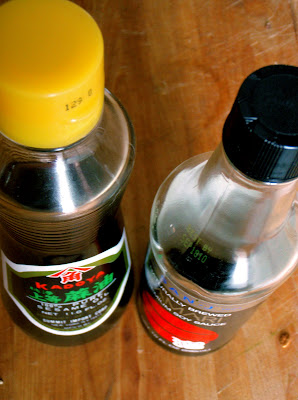
A good relationship has countless advantages. Among them is pizza.
By now some of you know that Elise often delights me by whipping up several pizzas, of course from scratch. Last night's batch included a butternut and an anchovy-tapenade pie, both featured above. (Her halves also had cheese, a dab of which you can see on the slice above right, but more on that in a moment.)
She'll be working diligently from our home office and then suddenly peer over the screen of her laptop to declare "I'm going to make pizza tonight," as though possessed by some other power.
I'm an ardent feminist, but that doesn't stop me from observing that there's something about women and baking. Sure it might be the result of thousands of years of patriarchal oppression, with men demanding that women stick close to the oven for fear of them voting. On the other hand, maybe they just like it.
Among several modern, feminist-leaning, liberal couples that I know, the old gender divides often play out in the kitchen, if nowhere else. The men man the stove top (and of course the grill, fiery phallus that it is), the women the oven. Of course there are exceptions to the rule, but there does seem to be a trend.
Perhaps on some subconscious, symbolic level, women relate to the womb-like quality of the oven, a warm chamber from which life sustaining offspring are born. Then, like a male lion, the man eats those offspring.
Regardless, Elise likes to make pizza. And lately she's been indulging my shockingly effective sabbatical from dairy (so long, allergy induced asthma!) and making no cheese pizzas, aka tomato pies. While that might sound as unfulfilling as abstinence, I've actually come to prefer them over the standard, cow secretion covered alternative.
Sure I've had great pizza with cheese, but there's something clean and elemental in the simplicity of just crust and sauce. Without the rubbery, fatty cloak of cheese, it's just you, a little sauce, and the crust. There's nowhere to hide: the sauce has to be good, the crust has to be great.
Now if only a man could figure out how to do it.






















